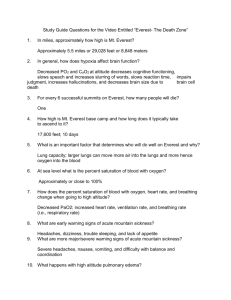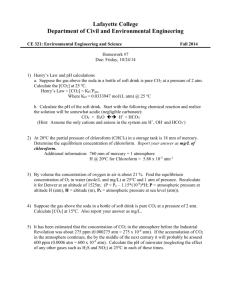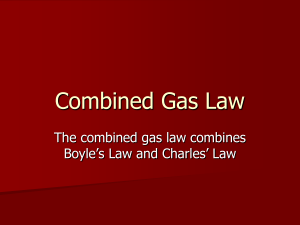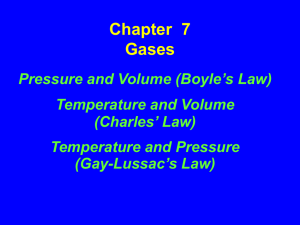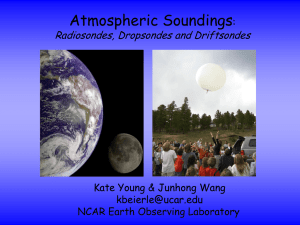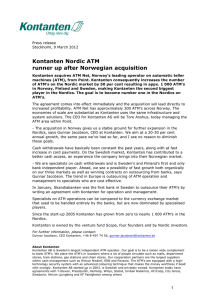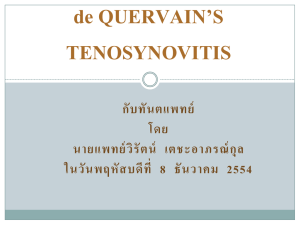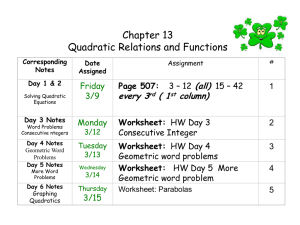altitude - Klemmer
advertisement
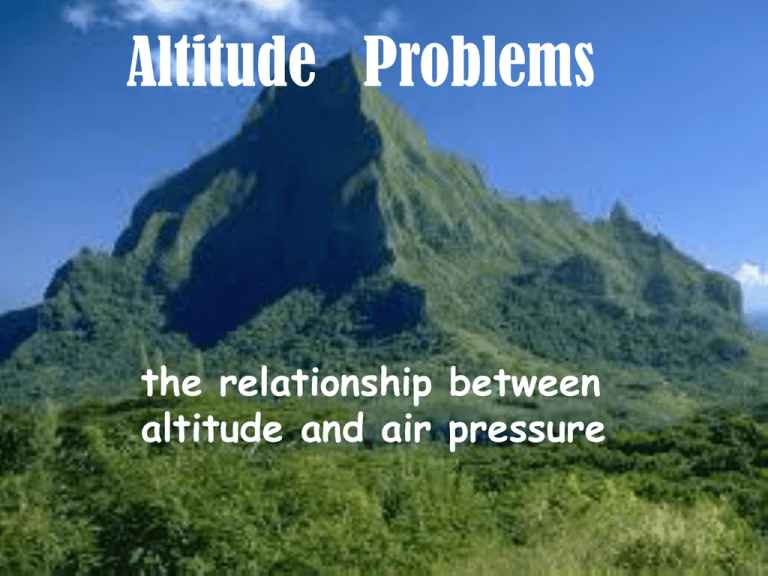
Altitude Problems the relationship between altitude and air pressure “rule of thumb” air pressure drops about 25 mm Hg for every 1000 ft (300 m) of elevation 1. What is air pressure on top of Mt. Battie (740 ft)? 740 ft x (25 mm/1000 ft) = 19 mm drop in pressure 760 mm – 19 mm = 741 mm 2. At what temperature would water boil on top of Mt. Battie? From our vapor pressure curve, @ 741 mm the bp of H2O is about 99°C. “rule of thumb” air pressure drops about 25 mm Hg for every 1000 ft (300 m) of elevation 3. What is air pressure on top of Mt. Katahdin(4800 ft)? 4800 ft x (25 mm/1000 ft) = 120 mm drop 760 mm – 120 mm = 640 mm 2. At what temperature would water boil on top of Mt. Katahdin? From our vapor pressure curve, @ 640 mm the bp of H2O is about 95°C. “rule of thumb” air pressure drops about 25 mm Hg for every 1000 ft (300 m) of elevation 3. What is air pressure on top of Mt. Everest(29,000 ft)? 29,000 ft x (25 mm/1000 ft) = 725 mm drop in pressure 760 mm – 725 mm = 35 mm Hmm … this is not reasonable: the limit for humans is about 150 mm! • The rule of thumb breaks down at high altitudes. • The relationship is not a proportional or linear relationship. rule of thumb is proportional (linear) Altitude the actual relationship is curved – real P at high altitude is higher than predicted by linear model Pressure exponential relationships y = 10x or y = ex • exponential equations can be used to represent this kind of a curved relationship. • in an exponential equation one of the variables is an exponent a word about “e” • Worried about working in something other than base 10 (10x)? • “e” is just an irrational number, like the pi (p) you use in geometry. It’s named for Euler, a really good mathematician (look him up some time …). • We are using base “e” because it gives us a simple formula your calculators can handle quickly and easily. new pressure formula P= -h/7 e • “P” is pressure, which must be in atmospheres. 1 atm = 760 mm • “h” is height (altitude), which must be in kilometers. 1 mile = 1.61 km 1 mile = 5280 feet 5. What is the pressure at the top of Mt. Everest (29,000 ft)? P= e-h/7 h = 29,000 ft P=? convert to km 29,000 ft x (1 mile/5280 ft) x (1.61 km/1 mile) = 8.84 km P = e-8.84/7 plug in & solve = 0.283 atm This is a reasonable answer, and in fact matches measured pressures. The exponential mathemathical model works! 6. At what temperature would water boil on top of Mt. Everest? 0.283 atm x (760 mm / 1 atm) = 215 mm From our vapor pressure curve, @ 215 mm the bp of H2O is about 68°C. 7. What is the altitude of Mount Hood, if air pressure there is 0.613 atm? P= e-h/7 h=? P = 0.613 atm plug in 0.613 = e-h/7 To solve for “h”, we need to get it out of the exponent. Do do that, take the natural logarithm (ln) of both sides : “ln” IS the exponent. ln (0.613) = ln (e-h/7) -0.489 = -h/7 multiply both sides by -7 to get h 3.43 km = h
